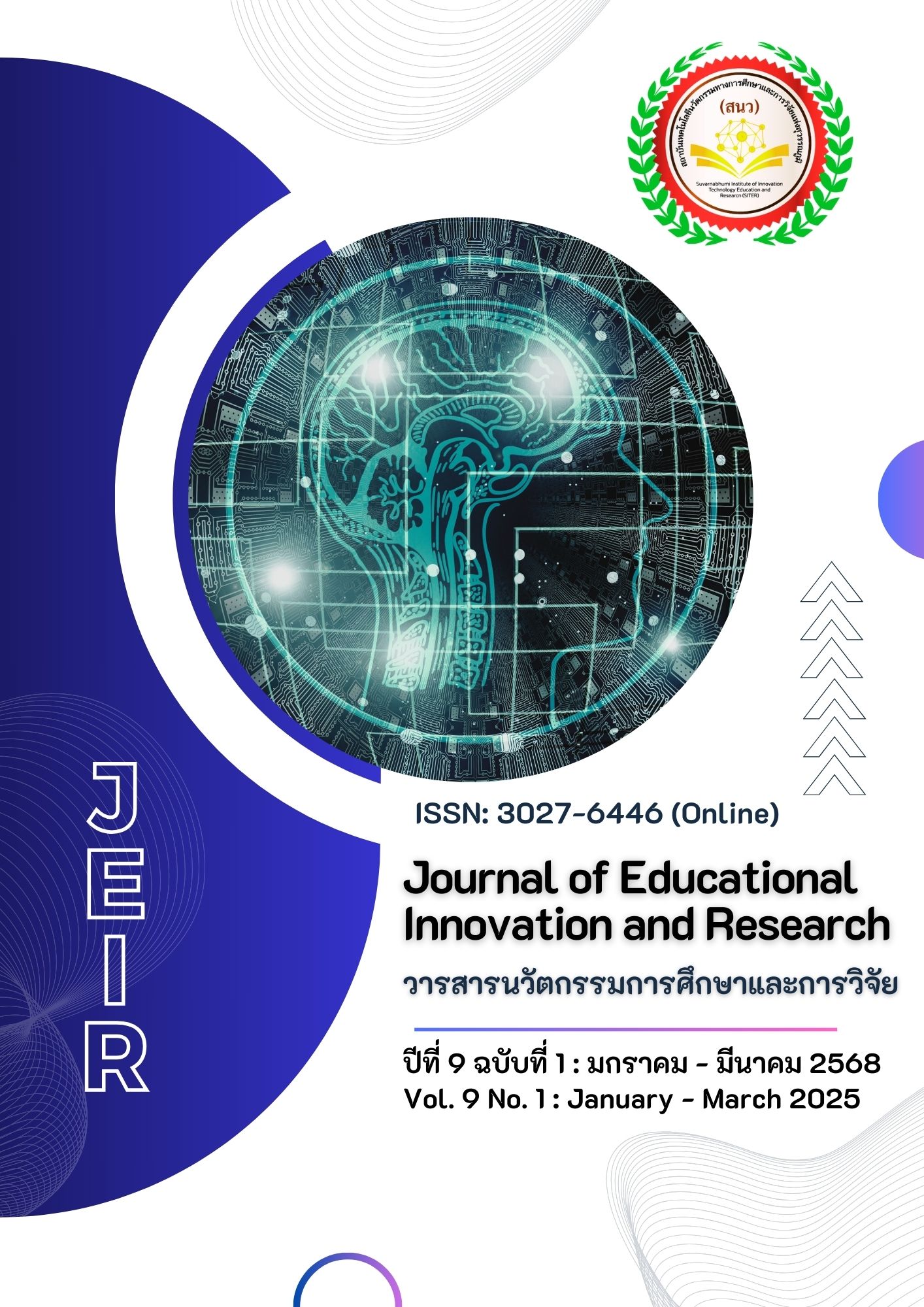Accounting management model of small and medium-sized enterprises in Bangkok
Main Article Content
Abstract
This article aims to study the knowledge gained from customers, the characteristics, capabilities and innovations of accounting workers in SMEs, and to study the knowledge gained from customers in terms of the characteristics, capabilities and innovations of accounting workers in SMEs. This research is a quantitative study using a questionnaire as a tool to collect data from a group of SME entrepreneurs in Bangkok from a sample of 400 people using a simple random sampling method. The hypothesis was tested by analyzing the data using percentages, frequencies, means, standard deviations and structural equation models. The results of the study found that knowledge gained from customers has a direct influence on the application of knowledge, the characteristics and capabilities of accounting workers have a direct influence on the application of knowledge, innovation has a direct influence on the application of knowledge, and the application of knowledge has a direct influence on the innovation capabilities of accounting workers.The results of the hypothesis testing found that knowledge gained from customers has no influence on the application of knowledge, with a path coefficient of .16 and a t-stat of 1.739. The characteristics and capabilities of accounting workers have an influence on the application of knowledge, with a path coefficient of .60 and a t-stat of 3.489. Innovation has an influence on the application of knowledge. The path coefficient = .71 and t-stat = 3.489, and the application of knowledge to benefit has an influence on the innovation capability of accounting workers with the path coefficient = .68 and t-stat = 7.939.
Article Details

This work is licensed under a Creative Commons Attribution-NonCommercial-NoDerivatives 4.0 International License.
References
Bank of Thailand. (2020). Annual report of the Bank of Thailand. Accessible from the Bank of Thailand. https://shorturl.asia/fQXUbThailand
Browne, M. W., & Cudeck, R. (1993). Alternative ways of assessing model fit. In K. A. Bollen and J. S.Long (Eds.). Testing structural equation models (pp. 136-162). Sage.
Byrne, B.M. (1994). Structural Equation Modelling with EQS and EQS/Windows: Basic Concepts, Applications, and Programming. Sage.
Cohen, J. (1988). Statistical power analysis (2nd ed.). Erlbaum.
Cronbach, LJ. (1990)Essentials of Psychological Testing. HarperCollins.
Drucker, P. (1985). Innovation and Entrepreneurship: Practices and Principles. Harper & Row, New York.
Goldsmith, R. E., & Foxall, G.R (2003) The measurement of innovativeness. In L.V. Shavinina (Ed.) The international handbook on innovation. kidlington, Oxford Elsevier.
Gurdyoo, T. (2022). The correlation between accounting professional ethics as well as internal control efficiency and the quality of financial report of small and medium enterprise in Bangkok metropolitan areas [Master of accountancy school of accountancy Sripatum University].
JonassenD.H. & Remidez H. (2005). Mapping alternative discourse structures onto computer conferences. International Journal of Knowledge and Learning, 1, 113–129.
Kambil, A., Friesen, G. B., & Sundaram, A. (1999). Co-creation: A new source of value. Utlook Magazine, 3(2), 23-29.
Kline, T. (2005). Psychological testing: A practical approach to design and evaluation. Sage.
Kolb, D.A., et al. (1998). Knowledge adaptation in theory of group process. John Wiley & Sons.
Liao, N. N. H., & Wu, T. C. (2009). The pivotal role of trust in customer loyalty: Empirical research on the system integration market in Taiwan. The Business Revies, Cambridge,12(2), 277-283.
Liao, S. H., Fei, W. C., & Chen, C. C. (2007). Knowledge sharing, absorptive capacity and innovation capability: An empirical study of Taiwan’s knowledge-intensive industries. Journal of Information Science, 33, 340-359.
Liao, S.H., Fei, W.C. & Chen, C.C. (2007).Knowledge sharing, absorptive capacity, and innovation capability : an empirical study of Taiwan's knowledge/intensive industries Journal of Information Science, 33 (3), 56-72.
Matsuo, M. & Kusumi, T. (2002). Salesperson’s procedural knowledge, experience and performance: An empirical study in Japan. European Journal of Marketing, 36 (7/8), 840-854.
Minbaeva, D.B. (2005). HRM practices and MNC knowledge transfer. Personnel Review,34(1),125-144.
Phongpitak, S. (2006). Teaching documents for tax planning. (revised edition). Chiang Mai University.
Quinlan, M. (1998). Labor market restructuring in industrialized societies: An overview. Economic and Labor Relations Review, 9, 1–30.
Ramasamy, S. (2009). Total quality management. Tata McGraw-Hill.
The Accountancy Professional Council under Royal Patronage. (2015). Financial reporting standards. http://www.fap.or.th/index.php?lay=show&ac=article&Id=539873829
Ullman, J. (2014). Ladylike/butch, sporty/dapper: exploring “gender climate” with Australian LGBTQ students using stage–environment fit theory. Sex Educat, 14, 430–443.
Van de Vrande, V., De Jong, J. P., Vanhaverbeke, W., & De Rochemont, M. (2009). Open Innovation in SMEs: Trends, Motives and Management Challenges. Tech-novation, 29, 423-437.
Vanhaverbeke, W. (2006) The Interorganizational Context of Open Innovation. In: Chesbrough, H., Vanhaverbeke, W. and West, J., Eds., Open Innovation: Researching a New Paradigm, Oxford University Press, Oxford.
Vargo, S.L. & Lusch, R.L. (2008). Service-Dominant Logic: Continuing the Evolution. Journal of the Academic Marketing Science, 36, 1-10.
Westland, J. C. (2010). Lower Bounds on Sample Size in Structural Equation Modeling. Published in Electronic Commerce Research and Applications, forthcoming.
Yukl, G., & Lepsinger, R. (2005). Why integrating the leading and managing roles is essential for organizational effectiveness. Organizational Dynamics, 34(4), 361–375.

